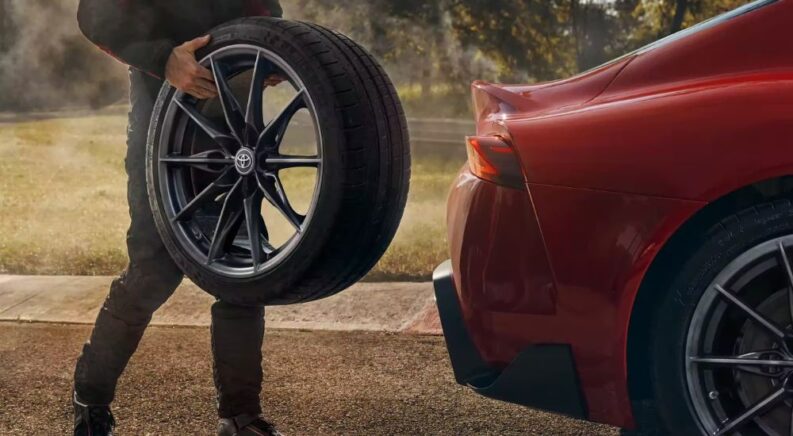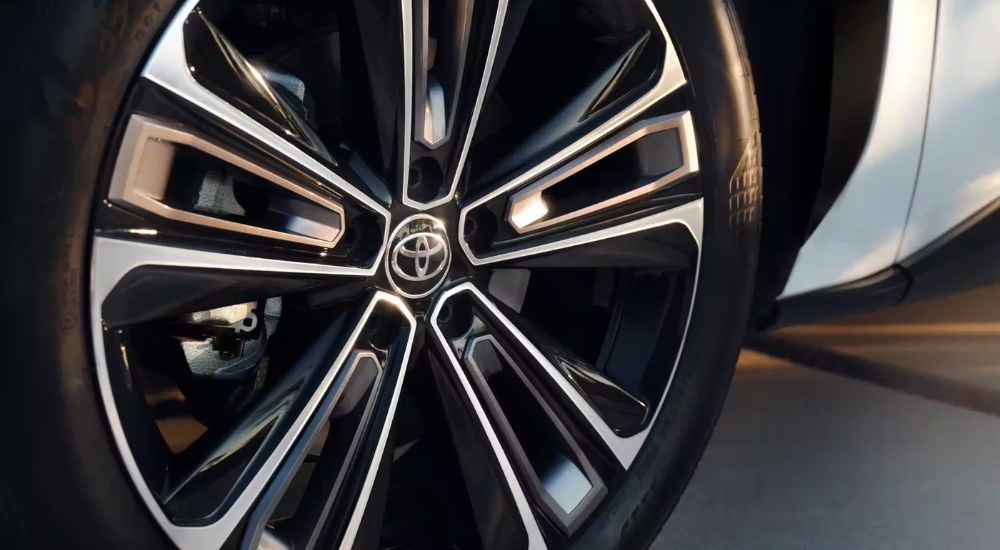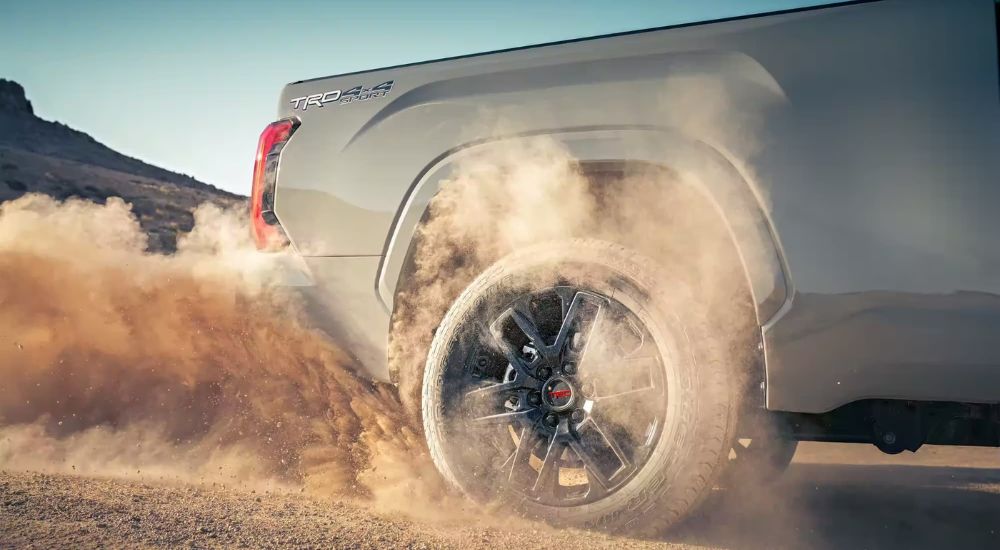Taking your vehicle to a mechanic or dealership service center for a tire rotation is the quickest and easiest way to get the job done. However, it does cost a bit of money, so if you’re handy and would rather spend time and elbow grease instead of cold hard cash, then doing the job yourself might seem tempting. But before you get started, it’s important to know what you’re in for. So let’s go over what you need to know if you want to rotate your own tires.
The exact details can differ from vehicle to vehicle, so when in doubt, always check your owner’s manual. While a Toyota tire rotation isn’t necessarily different from a Ford tire rotation, there is a difference between what you should do for front-wheel drive and rear-wheel drive vehicles. This guide will cover several different rotation patterns.
Why Do Tires Need to Be Rotated?
The rubber and other materials that tires are made of need to be somewhat soft in order to grip the road, giving the driver traction and control. But this softness also means that all tires will wear down over time, which is why they need to be replaced periodically, even if you don’t obtain severe damage like a puncture or crack. While your tires will need to be replaced eventually, extending their life as much as possible is best.
When tires wear down, it doesn’t happen uniformly. This means that if you don’t rotate them, they’ll eventually get lopsided: worn down to an unsafe level on one side while the other side still has plenty of life left in it. That means you’ll have to replace your tires more often. Rotating your tires also gives you a great opportunity to check their condition and make sure they’re still roadworthy.
How Often Do Tires Need to Be Rotated?
This can vary based on the type of tire you’re using. In general, if you’re using all-season tires, you’ll want to get them rotated every 5,000 to 8,000 miles. If you have all-terrain tires, you’ll likely need to have them rotated more often. You should also consult your owner’s manual or a trusted technician if you have summer-only tires to see how often they should be rotated; these tires are softer, so they wear down quickly and must be replaced more often.
What You’ll Need
Before you get started, let’s go over everything you need to get the job done:
- A flat surface with enough room to park your vehicle and maneuver around it.
- Your owner’s manual, to ensure you’re using the right rotation pattern.
- A jack, to lift your vehicle up so you can remove and replace the tires.
- A few jack stands—at least two but preferably four—to hold the vehicle up while the tires are off.
- A lug wrench, to remove the lug nuts.
- Gloves, to get a better grip and keep your hands clean.
Four Tire Rotation
From sedans to SUVs to pickups, most vehicles are covered by three simple four-tire rotation patterns. You can check your owner’s manual to figure out which one is recommended for your particular vehicle. If you’ve lost your manual, you can usually find a digital version on the manufacturer’s website.
If your vehicle uses front-wheel drive, then it likely uses a Forward Cross rotation pattern. In this scheme, you would move the front tires to the rear axle, keeping the left tire on the vehicle’s left and the right tire on the vehicle’s right. The rear tires are moved to the front axle, and their position is switched: the right tire moves to the vehicle’s left, and the left tire moves to the vehicle’s right. Rear- and four-wheel drive vehicles have a similar pattern called a Rearward Cross, where the crossing is revered. In this pattern, the rear tires move to the front axle without changing sides, and the front tires are both moved to the rear axle and reversed.
The X-Pattern is the final common four-tire rotation pattern. In this one, both sets of tires are reversed. The front left tire moves to the back right, the front right tire moves to the back left, the back right tire moves to the front left, and the back left tire moves to the front right. This pattern can be used for rear-, four-, and front-wheel drive vehicles.
There are some special circumstances where none of these patterns are applicable. For instance, some performance tires can only turn in one direction, so they can’t be switched from the right side to the left. In this case, you can use the front-to-rear pattern, moving the front tires to the rear axle and vice versa without crossing. Conversely, some vehicles use non-directional tires but use a different size on the front axle than in the back. In this case, you’d use the side-to-side pattern, moving the tires on the left to the right and vice versa while keeping the front tires up front and the rear tires in the back.
Five & Six Tire Rotation
Most spare tires are only meant to be used temporarily, and this would be ignored while doing a tire rotation. However, if your spare is a non-temporary tire and is the same type as the tires on your vehicle, then you can include it in your rotations. Again, the best practice is to check your owner’s manual, but there are two basic patterns used in a five-tire rotation, both of which are based on common four-tire rotation patterns. For front-wheel drive vehicles, you use a Forward Cross, but move the spare tire to the right side of the rear axle and move the tire on the right side of the front axle to the spare tire’s spot. For rear- and four-wheel drive vehicles, you use a Rearward Cross, still moving the spare to the rear right position but replacing it with the tire that was on the left side of the front axle.
Some trucks use two tires on each side of their rear axle. In this case, you would need to do a six-tire rotation. If the truck uses different-sized wheels on the front and rear axle, then you’d swap the position of the front two tires from left to right and do the same for each pair of tires in the back. If all six wheels are the same size and type and are non-directional, then you move the inner rear tires up front, the front tires to the outside of the rear axle, and the outer rear tires to the inside of the rear axle.
Tire Rotations Are Necessary
As you can see, there’s no one-size-fits-all solution to tire rotation. You need to keep in mind the type of vehicle you drive, the type of tire you’re using, and your driving habits. If this all sounds too complicated, you can always take your car in for professional service when it comes time to rotate your tires. This also gives you a regular opportunity to have a technician inspect your tires, notice any potential issues, and re-balance your tires once they’ve been rotated to ensure that everything is in tip-top shape.
If you still want to rotate your tires yourself, just make sure to pay attention to the details. Get all of your equipment gathered together and make sure you’re familiar with your rotation pattern before you start—that way, you can be at your most efficient. With some patience and elbow grease, you can get this job done right and keep your tires around for a good, long while.



